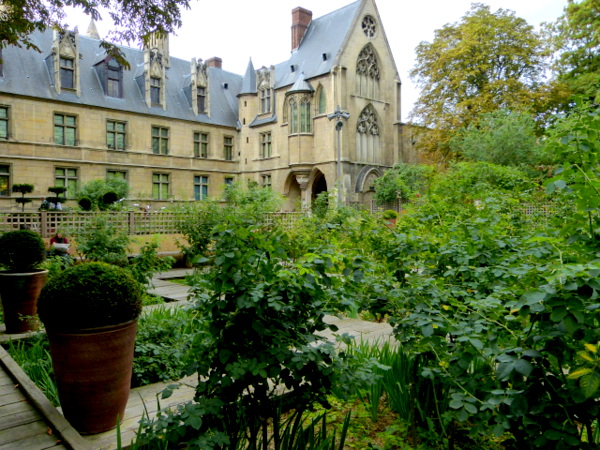
FRANCE Paris – The traffic noise at the corner of busy Saint-Germain and Saint-Michel boulevards turned muffled murmur this September day as I entered the Unicorn Forest via a path shaded by hazel, elder, quince and chestnut trees, trees symbolic of the era when unicorns were thought to be about.
As I walked, I noted paw and hoof prints embedded in the pathway, letting it be known that other beings had wandered through the forest before me — rabbit, fox, lion and, yes, unicorn — escaped from the famed Lady and the Unicorn tapestries I was on my way to see.

The museum has been home to the series of six Lady and the Unicorn tapestries since 1882.
Considered to be one of the greatest artworks of Europe’s Middle Ages, the tapestries are undisputedly the highlight of the museum’s holdings.
Dedicated to the Middle Ages since 1834 …
All of Le Musée de National du Moyen Âge’s collections are housed in an imposing, multi-turreted mansion constructed in 1334 as the Paris townhouse of the Abbots of Cluny. In 1843 it became a public museum, founded to house the accumulations of an amateur art collector fascinated by the Middle Ages. Acquisitions continued through the years, giving today’s visitors a colorful, diverse and extensive view of medieval art, history and mankind.
Non-traditional interpretation of landscaped areas …
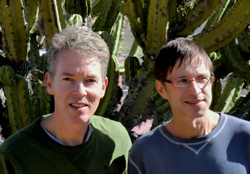
Eric Ossart and Arnaud Maurieeres
Given the architecture and history of the museum, it might be assumed that landscaped areas surrounding the building would be exact medieval reproductions. Not so! In September of 2000, gates swung open to reveal gardens created by Eric Ossart and Arnaud Maurieères, a design team acclaimed for their innovative, nontraditional interpretation of urban spaces.
Here, the duo turned to the Lady and the Unicorn tapestries to create seven spaces, with the Unicorn Forest the first encountered when entering the garden gate at the corner of rues Saint Germain-des-Prés and Saint-Michel. The Unicorn Forest, harkening to the fears felt by medieval man when faced with the obscure forces of nature, leads to an enclosed terrace of gardens with period-inspired themes.
The Love Garden, filled with sweet-scented plants, represents the secret nooks for private meetings that medieval gardens often had. The Celestial Garden features revered religious symbols, such as violet for Mary’s humility, columbine’s dove-like flowers for the holy spirit, strawberries’ triplet-shaped leaves symbolizing the Holy Trinity.
Horticultural examples recall medieval necessities…
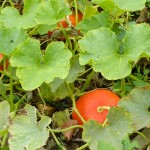
Roses fill the Garden of Eden, paradise lost. In this case, lunchtime paradise found. Low benches placed around the section are popular with brown baggers.
Quiet areas invite reflection and conversation …
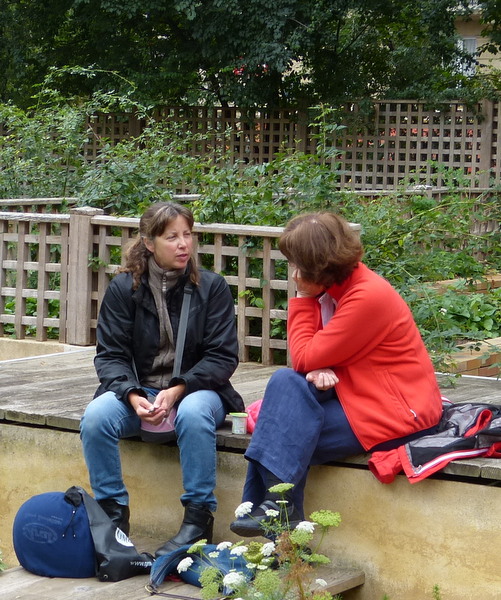
The Meadow, a long rectangle of millefleurs (a thousand flowers), is centered by two canals with a reed-like metal sculpture running the length of the waterways.
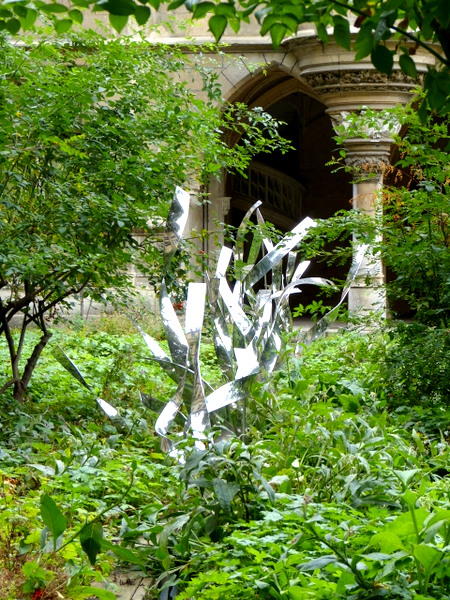
Alas, the Lady and the Unicorn had wandered off …
Inspired by the plethora of flowers through which the Lady and the Unicorn wander, the Meadow beckons as the entrance to the museum’s collections that, unfortunately this day, did not include the Lady and the Unicorn tapestries! They were away for only the second time since 1882 (the first in 1973 on loan to New York’s Metropolitan Museum), with viewers in Japan thronging to see them while the Cluny area in which they are hung went under restoration. “Come back next month,” I was told.
If you go …
Le Musée de National du Moyen Âge, also known as the Cluny Museum (6, place Paul Painlevé, 75005 Paris, France; phone 33 [0] 1 53 73 78 16, www.musee-moyenage.fr/ang.
